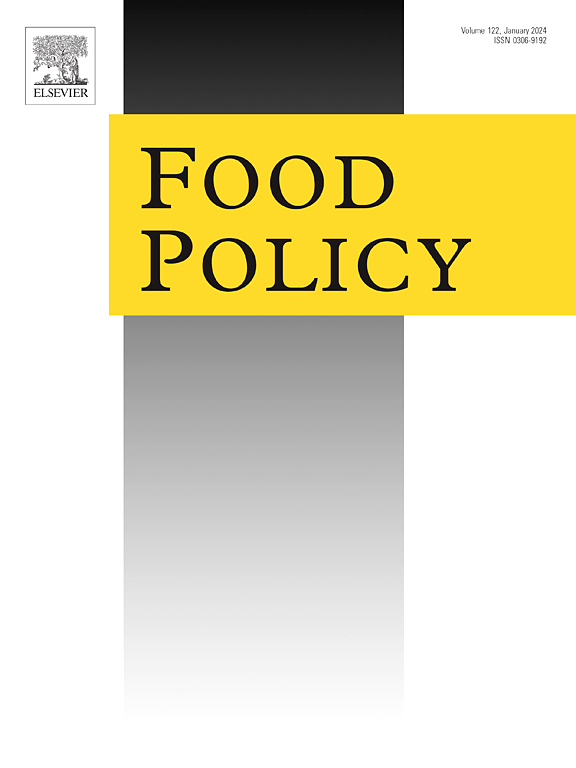Food safety, sampling inspection and optimization of regulatory resource allocation: Evidence from China’s aquatic food inspection
IF 6
1区 经济学
Q1 AGRICULTURAL ECONOMICS & POLICY
引用次数: 0
Abstract
Food safety is a widespread problem that challenge regulatory bodies and consumers around the world. Earlier studies emphasized resources as the key to improving regulatory effectiveness, but our study suggests this common sense should be reexamined, especially in the context of increasing regulatory burdens in food safety. Using China’s aquatic food safety sampling inspection data with over 300,000 samples from 2014 to 2022, we examine the effects of sampling inspection on the failure rate of aquatic foods, and try to identify supply chain segments where more regulatory resources should be allocated. The results show that increasing the number of sampling inspections significantly reduces both the failure rate in aquatic foods, but the effects of increased sampling inspection on improving aquatic food quality follows an inverted U-shaped pattern. Increasing the intensity of sampling inspections targeting the upstream segment in the supply chain can significantly reduce the failure rate of aquatic foods in the downstream segments. Moreover, increasing the frequency of sampling inspections is more effective in reducing the failure rate in high-risk segments of the aquatic food supply chain, such as restaurants, online stores, wet markets, wholesale markets, and fresh food retailers. Our study highlights the crucial impact of regulatory bodies sampling inspection on reducing the failure rate of aquatic foods, and in particular provides policy implications for optimizing the allocation of regulatory resources in different supply chain segments.
食品安全、抽样检验与监管资源优化配置:来自中国水产食品检验的证据
食品安全是一个普遍存在的问题,对世界各地的监管机构和消费者都构成了挑战。早期的研究强调资源是提高监管效率的关键,但我们的研究表明,这一常识应该重新审视,特别是在食品安全监管负担日益增加的背景下。利用2014年至2022年中国水产食品安全抽样检验数据,研究了抽样检验对水产食品不合格率的影响,并试图找出需要投入更多监管资源的供应链环节。结果表明,增加抽检次数显著降低了水产品的不合格率,但增加抽检对水产品质量的改善效果呈倒u型变化。加大供应链上游环节的抽查力度,可以显著降低下游环节水产食品的不合格率。此外,增加抽样检查频率对于降低水产食品供应链高风险环节(如餐馆、网上商店、菜市场、批发市场和生鲜食品零售商)的不良率更为有效。我们的研究强调了监管机构抽样检查对降低水产食品不良率的重要影响,特别是为优化不同供应链环节的监管资源配置提供了政策启示。
本文章由计算机程序翻译,如有差异,请以英文原文为准。
求助全文
约1分钟内获得全文
求助全文
来源期刊

Food Policy
管理科学-农业经济与政策
CiteScore
11.40
自引率
4.60%
发文量
128
审稿时长
62 days
期刊介绍:
Food Policy is a multidisciplinary journal publishing original research and novel evidence on issues in the formulation, implementation, and evaluation of policies for the food sector in developing, transition, and advanced economies.
Our main focus is on the economic and social aspect of food policy, and we prioritize empirical studies informing international food policy debates. Provided that articles make a clear and explicit contribution to food policy debates of international interest, we consider papers from any of the social sciences. Papers from other disciplines (e.g., law) will be considered only if they provide a key policy contribution, and are written in a style which is accessible to a social science readership.
 求助内容:
求助内容: 应助结果提醒方式:
应助结果提醒方式:


